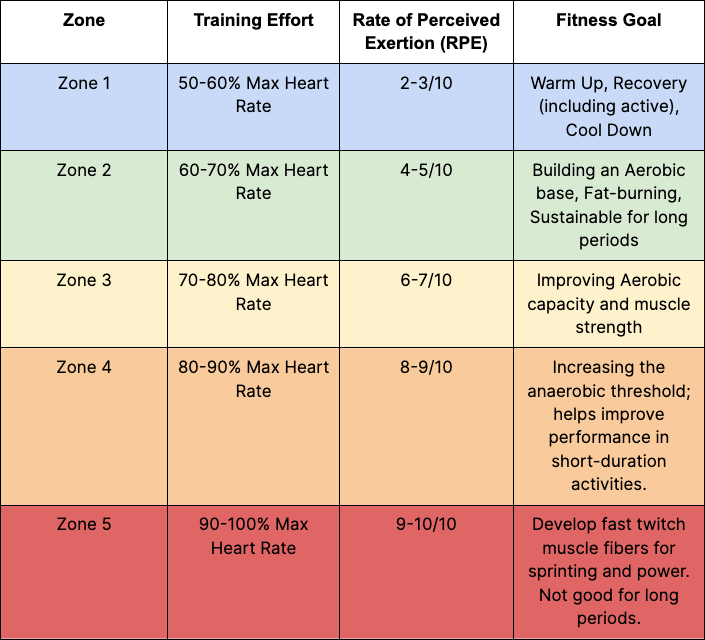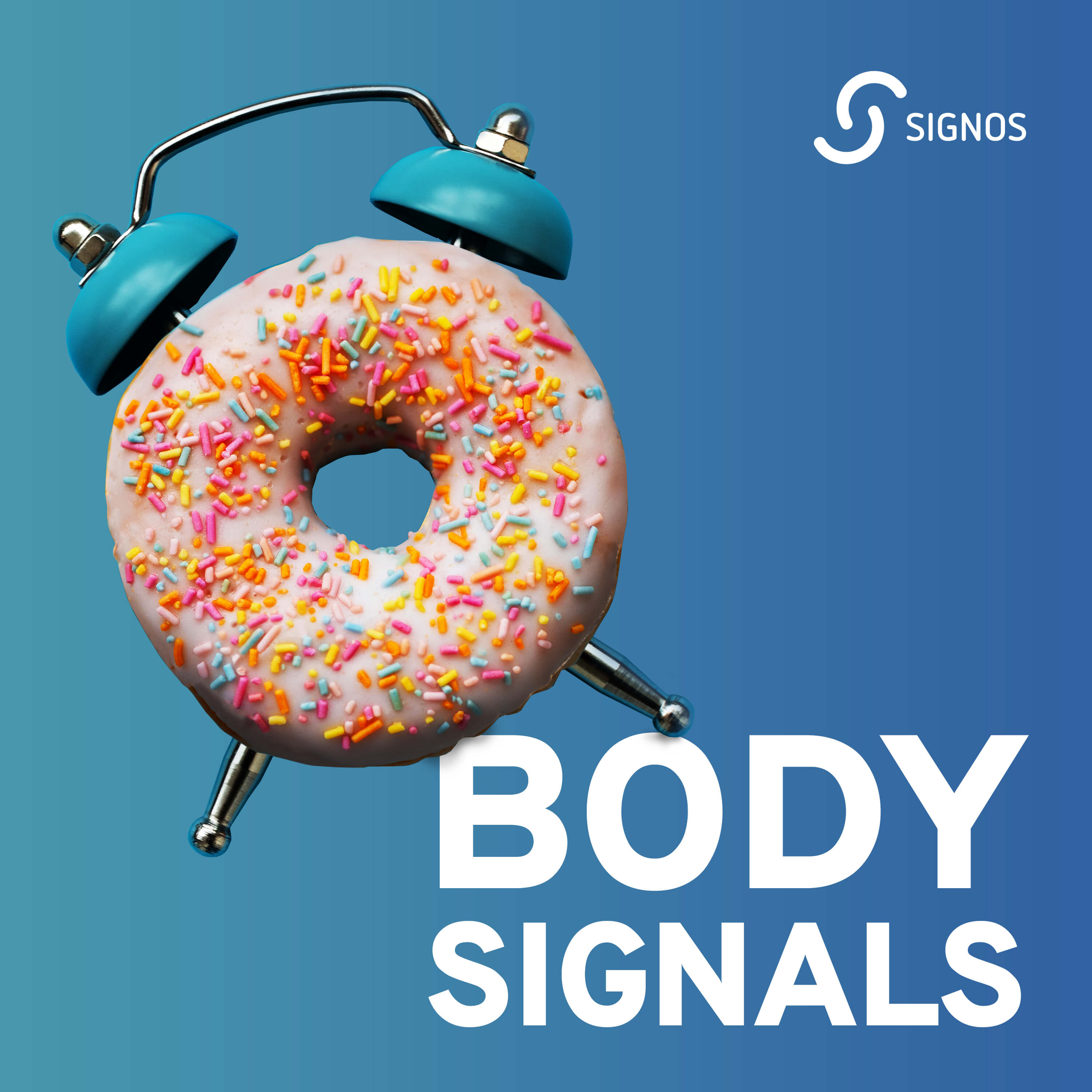Heart rate “zone” training refers to the specific focus on cardiovascular fitness using your heart rate as a guide for intensity. There are five zones of heart rate ranges that affect your lungs, heart, and muscles in different physiological ways. You might be familiar with the terms “light, moderate, and vigorous physical activity.” This is essentially what you are achieving; however, following your heart rate zones will help you understand how intense you are exercising and what your body is using for fuel (fat vs. glucose). This article focuses on Zone 2 heart rate training, its importance, and how to use it today for your health and fitness goals.
What is Zone 2 Heart Rate and Why is It Important?
Zone 2 training refers to moderate-intensity cardio exercise where you work at 60 to 70 percent of your maximum heart rate for long durations. This is considered a “sweet spot” for improving overall health and fitness because it allows you to stay at an intensity for fat oxidation (burning more fat for energy), reduce lactate build-up, and improve your stamina for more exercise all through the growth of your mitochondria.1 Training in these intensities tends to be the most helpful for endurance athletes, individuals wanting to improve their cardiovascular fitness, and those with weight loss goals because of its effect on the cell’s mitochondria and aerobic pathways. Here is a table of each heart rate zone and which fitness goal it targets.

Zone 2: What Does Science Say About It?
When exercising at a Zone 2 heart rate, we focus on the health and growth of our mitochondria, the “powerhouse” of our cells. Energy (in the form of ATP) is made within each mitochondrion and used by all of the cells in our body to function. The more you exercise in Zone 2, the bigger and more efficient your mitochondria become.1 This allows you to have more endurance and feel more aerobically “fit.” Mitochondria also need to be “flexible,” meaning they must utilize both fat and glucose to create energy depending on the activity we need to perform. Individuals with chronic disease and type 2 diabetes become “inflexible” within their mitochondria and can only use glucose for energy instead of fat.1 This is why Zone 2 exercise is important for improving the health and mitochondrial flexibility in those with cardiovascular disease, diabetes, and other metabolic dysfunction.1
Mitochondria also help process toxic build-ups such as lactate and hydrogen. The more efficient mitochondria become, the better our bodies are at flushing out lactate (what makes us feel very sore and tired after a workout). If we spend all of our time in HIIT classes but zero time in Zone 2 training, then our body has not been equipped with a foundation to flush out lactate. This is why people have difficulty starting an exercise routine; the soreness from high-intensity exercise requires three to four days to recover before trying again, yet they still feel too fatigued to try. It becomes a never-ending cycle of soreness and failure.
{{mid-cta}}
The Benefits of Heart Rate Zone 2 Training on Metabolic Health
Exercising in Zone 2 heart rates benefits our overall health, wellness, and athletic performance. Some of these benefits include:9
- Improved cardiovascular health: working in Zone 2 heart rates allows the body to absorb and take in oxygen for the rest of your body. This is called your VO2 max and is one of the best ways to measure cardiovascular fitness.3, 10
- Supports weight loss: The increased focus on fat oxidation in Zone 2 heart rates makes these exercises great for weight loss and body recomposition.
- Enhances mitochondrial activity: Because Zone 2 promotes fat oxidation and ATP production, the mitochondria within our cells begin to work more efficiently, increase in size, and eventually grow in density without our body.11
- Acts as a mood booster: Spending time in Zone 2 heart rate intensities means reducing the amount of cortisol floating in our bodies while enhancing the concentration of “feel good” neurotransmitters like dopamine.13
- Prevents injuries and overtraining: The reduced stress on our body from focusing on lower-intensity Zone 2 training means we are less likely to experience injuries and burnout from training too hard.
- Speeds up recovery: Zone 2 heart rate training is low intensity and can promote “active recovery” by increasing blood flow and flushing out the toxins that make our muscles sore.
- Improves insulin sensitivity: As our mitochondria become more efficient at burning fat for energy, we become less sensitive to insulin and find more stable blood sugar levels over time.12
- Improves insulin-independent glucose uptake: Our body can use the glucose in our blood without relying on insulin. Zone 2 heart rate training has been shown to increase the ability of our mitochondria to use both glucose in the blood and fat to make energy. This flexibility by the mitochondria thus improves our body’s ability to remove glucose from our blood.12

How to Calculate Heart Rate Zone 2
To find out what your Zone 2 heart rate is, first, you need to calculate your maximum heart rate. There are many ways to do this; some more complicated than others. For a long time, it was recommended to calculate your maximum heart rate by subtracting your age from 220. This is no longer proven to be very accurate as there are other factors (i.e., sex, fitness, etc.) that affect our maximum heart rate. Here is a simple yet relatively accurate calculation to use:2
HRmax (males) = 208.609 - 0.716 x age
HRmax (females) = 209.273 - 0.804 x age
For example, a 42-year-old male would have a max heart rate of 208.609 - 0.716 x 42 = 178 bpm. A 56-year-old female would have a max heart rate of 209.273 - 0.804 x 56 = 164 bpm.
How to Get Into Zone 2 Cardio
It is fairly easy to find yourself doing Zone 2 training with any exercise (i.e., swimming, running, biking, weight lifting, etc.). However, the key is to stay within the 60 to 70 percent max HR range for at least 45 minutes at a time and aim for between 150 to 180 minutes per week.
If you are starting your exercise journey, it might be difficult to maintain Zone 2 heart rates with running or swimming as these activities are more difficult and require much more cardiovascular fitness to feel “easy or moderate.” However, stationary biking or walking might be great places to start since controlling the intensity of these activities is easier. Other ideas include light weight lifting, yoga, pilates, Barre, dancing, or light jogging. Low-impact exercises tend to be the best place to start if you are exercising for overall health, strength, and wellness.
How Do You Know You’re in Zone 2?
You can use a few simple methods to determine if you are maintaining your Zone 2 heart rate targets while exercising.
- Talking test: If you can talk while exercising and hold a long conversation even while feeling slightly out of breath, then you are likely in Zone 2. This should feel like mild heavy breathing, but you should still be able to talk on the phone.
- Heart rate method: Calculate your Zone 2 heart rate using the formula above, then use a heart rate strap or on your watch to help keep track of your heart rate during activity.
- Maffetone formula: Otherwise known as the “MAF 180 formula,” this formula calculates your exact maximum heart rate at which you are maintaining aerobic activity.14 Once you go beyond your maximum, you will likely enter anaerobic systems and no longer be in fat oxidation. This formula is more accurate than others as it considers your age, fitness level, and if you are injured or recovering from illness.
- Measure lactate: This is the most accurate and precise way to find your Zone 2 heart rate; however, it requires frequent blood samples during the test, which becomes cumbersome and expensive. If your lactate is between 1.7-1.9 mmol (measured after activity), you are in Zone 2.
How Much of Zone 2 Exercise Do You Need?
Training in Zone 2 heart rates for most of your total exercise time during the week (about 80 percent) is best. Since the American Heart Association recommends 150 minutes per day of moderate-intensity activity for general health and wellness, this equates to about 120 minutes/week of Zone 2 training (or 3 times per week of 40-45 minutes per session). To obtain the full benefits of Zone 2 training, as explained above, most doctors recommend spending at least 45 minutes on this heart rate during a single bout of exercise.4
Overtraining: What is It and How to Avoid It
Overtraining is a syndrome or condition in which an individual has spent too much time doing high-intensity exercise without proper rest, recovery, nutrition, etc. Symptoms of overtraining include:
- Fatigue and lack of motivation
- Poor sleep or insomnia
- Chronic injuries and poor wound healing
- Increased resting heart rate,
- Feelings of depression or anxiety.

Overtraining for long periods can lead to major health concerns such as heart damage and arrhythmias, hormone dysfunction, infertility, weakened immune systems, and depression.5, 7, 8 It is important to remember that a balance of physical activity and exercise is key to having optimal health and happiness. There is a reason why people train “smarter, not harder.”
Learn More About How to Achieve Better Health Through Exercise with Signos’ Expert Advice.
If you have more questions on improving your health, fitness, and nutrition, seek the expert advice of the Signos continuous glucose monitor and Signos team. A continuous glucose monitor (CGM) can give you the insights to make smarter nutrition and exercise choices. The Signos app provides a unique, personalized program to help you lose weight and reach your health goals. Take this quiz to see if Signos is a good fit for you and reach your goals faster than ever before.
- Item 1
- Item 2
- item 3
Topics discussed in this article:
References
- Luks, Howard J., Zone 2 Heart Rate Training for Longevity and Performance. (2022, July 11). Retrieved from: https://www.howardluksmd.com/ zone-2-hr-training-live-longer-less-injury/#:~:text=During%20Zone%202%20training%20you,an%20energy%20source%20(substrate).
- Shargal, E., Kislev-Cohen, R., Zigel, L., Epstein, S., Pilz-Burstein, R., & Tenenbaum, G. (2015). Age-related maximal heart rate: examination and refinement of prediction equations. The Journal of sports medicine and physical fitness, 55(10), 1207–1218.
- Stöggl, T., & Sperlich, B. (2014). Polarized training has greater impact on key endurance variables than threshold, high intensity, or high volume training. Frontiers in physiology, 5, 33. https://doi.org/10.3389/fphys.2014.00033
- Peter Attia. #201 – Deep dive back into Zone 2 | Iñigo San-Millán, Ph.D. (Pt. 2). (2022, March 28). Retrieved from: https://peterattiamd.com/inigosanmillan2/
- Dawn R Swanson. (2006). Atrial Fibrillation in Athletes: Implicit literature-based connections suggest that overtraining and subsequent inflammation may be a contributory mechanism. Medical Hypothesis: 66 (6); 1085-1092. https://doi.org/10.1016/j.mehy.2006.01.006
- O'Keefe, E. L., Torres-Acosta, N., O'Keefe, J. H., & Lavie, C. J. (2020). Training for Longevity: The Reverse J-Curve for Exercise. Missouri medicine, 117(4), 355–361.
- Hakimi, O., Cameron, LC. Effect of Exercise on Ovulation: A Systematic Review. Sports Med 47, 1555–1567 (2017). https://doi.org/10.1007/s40279-016-0669-8
- Chung Y, Hsiao Y-T, Huang W-C. Physiological and Psychological Effects of Treadmill Overtraining Implementation. Biology. 2021; 10(6):515. https://doi.org/10.3390/biology10060515
- Mark Barosto. Zone 2 Cardio: Definition, Benefits & How To Know When You're In It. (2022, November 11.) Retrieved from: https://www.mindbodygreen.com/articles/how-exercise-makes-you-happy
- Conraads, VM., Pattyn, N., Maeyer, CD., Beckers, PJ., Coeckelberghs, E., Cornelissen, VA., Denollet, J., Frederix, G., Goetschalckx, K., Hoymans, VY., Possemiers, N., Schepers, D., Shivalkar, B., Voigt, J., Van Craenenbroeck, EM., and Vanhees, L. (2015). Aerobic interval training and continuous training equally improve aerobic exercise capacity in patients with coronary artery disease: The SAINTEX-CAD study. International Journal of Cardiology, 179: 203-210. ISSN 0167-5273, https://doi.org/10.1016/j.ijcard.2014.10.155.
- San-Millán, I., & Brooks, G. A. (2018). Assessment of Metabolic Flexibility by Means of Measuring Blood Lactate, Fat, and Carbohydrate Oxidation Responses to Exercise in Professional Endurance Athletes and Less-Fit Individuals. Sports medicine (Auckland, N.Z.), 48(2), 467–479. https://doi.org/10.1007/s40279-017-0751-x
- Romeres, D., Schiavon, M., Basu, A., Cobelli, C., Basu, R., & Dalla Man, C. (2021). Exercise effect on insulin-dependent and insulin-independent glucose utilization in healthy individuals and individuals with type 1 diabetes: a modeling study. American journal of physiology. Endocrinology and metabolism, 321(1), E122–E129. https://doi.org/10.1152/ajpendo.00084.2021
- Carek, P. J., Laibstain, S. E., & Carek, S. M. (2011). Exercise for the treatment of depression and anxiety. International journal of psychiatry in medicine, 41(1), 15–28. https://doi.org/10.2190/PM.41.1.c
- Dr. Phil Maffetone. The MAF 180 Formula: Heart-rate monitoring for real aerobic training. (2020, July). Retrieved from: https://philmaffetone.com/180-formula/
































